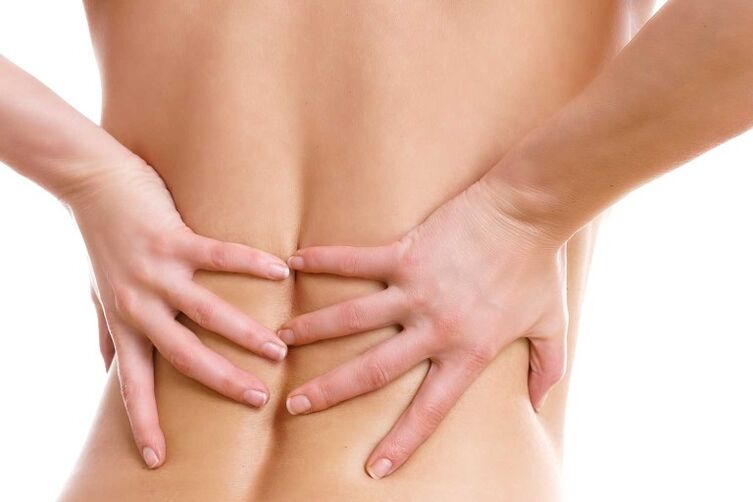Osteochondrosis is a serious disease of the spine that leads to disability. There are three forms of the disease: thoracic, neck, and lumbar. Each type has symptoms.
Cartilage dystrophy affects the space between the vertebrae. Osteosarcoma destroys cartilage tissue, causing thinning. Everything around is inflamed, including nerve fibers. Over time, the vertebrae are displaced, the nerves are compressed. Each segment of the spine leads to certain symptoms and consequences. The neurological manifestations of osteonecrosis are considered critical.
The main symptoms of osteonecrosis
The main symptoms that occur with these types of diseases:
- Pain at the heart of the disease, worse at rest.
- Weakness in the body, which manifests itself upon awakening, throughout the day. Caused by lack of oxygen.
- Blood pressure spiked. This is characteristic of cervical osteochondrosis, it is found in other diseases.

The disease has vague, generalized main symptoms, and therefore requires careful diagnosis. Consider the neurological aspect of the symptom.
Nerve for cervical osteonecrosis
Cervical fibroids are a type of dystrophic disorder affecting the cervical vertebrae. Due to the advanced disease, there is severe displacement of the vertebrae. Symptoms are pronounced. Common diseases. Children under the age of adolescence are often affected.
Neurological manifestations of dystrophy of the cervical spine:
- Cervical pain is present at all stages of cervical necrosis. It is manifested by a dull pain in the deep tissues of the neck. The patient complains of a "cola in the neck" sensation. The discomfort is present throughout the day and is worse at night.
- Scaly anterior myositis is manifested by pain in the lateral part of the neck, palpable and radiating to the corresponding arm. Cramps in the fingers when waking up. It is caused by inflammation of the nerve fibers, the roots of the C5-C7 vertebrae.
- Cranial pain is characteristic of severe cervical osteonecrosis. Manifested by burning pain syndrome at the top of the head, above the eyebrows. Even strong pain relievers often cannot ease the pain.
- Cochlear sensation is manifested by painful, cracked ears. Symptoms of cervical fibroids require urgent medical attention. Oxygen starvation is to blame.
Cervical fibroids present with nerve pain and require medical monitoring. There are many arteries in the neck. The disease reduces blood flow, causing confusion, disruption. The main symptoms of the disease from the neurological side are listed.
Manifestations of the disease are not obvious, it is related to the early stages. Most go to the doctor when the disease has progressed to the second or third stage.

Neurology for thoracic osteonecrosis
Neurological manifestations of thoracic osteonecrosis:
- Pain below the fibula - back pain. The person leans forward. There is a feeling of back fatigue, unbearable weight in the upper part.
- The plexus around the collarbone and ribs swell. Annoying when turning back. Swelling may be palpable under the scapula.
- In the area of the atria, a person experiences pain. Often there is no cardiac pathology, the point is that in the xiphoid process, there is inflammation due to disease in the back. Symptoms are considered bright, widespread. Neurologists are faced with complaints from patients suffering from heart attacks. The disease does not affect the work of the heart.
These are the main symptoms of thoracic osteonecrosis of the neurological changes of the body. Symptoms are expressed by feelings of discomfort, intense pain. Pain relievers, analgesics, psychotropic drugs used in severe illness.
The listed symptoms highlight the manifestation of the disease in the chest area.
Nerve for lumbar osteonecrosis
Manifestations of spondylolisthesis are from a general neurological condition. Osteochondrosis refers to a neurological disease, a neurologist is engaged in the treatment. Manifestations of articular cartilage dystrophy of the lumbar spine from the nerve side:
- Lumboischialgia is a low back pain that radiates down the leg. It manifests itself after a long time in an uncomfortable position. There are chronic, subacute forms. Chronic migraines are common. A common symptom of lumbar osteonecrosis in the second stage.
- Low back pain is low back pain in the lower back, which is worse at night. There are different types of low back pain. Each type differs in the nature of the pain.
- Nerve root disorder. The disease in the back is accompanied by inflammation of the nerve roots in the back and disrupts the movement of the body.
Lumbar fibroma is a common type of osteonecrosis. Every third patient had dystrophy of the articular cartilage. Sometimes appears in women after childbirth. It is related to injuries in the lumbar region, pelvis, occurring during pregnancy, childbirth.
Exacerbations of the disease may occur during later delivery. The treatment is comprehensive and complete. Most drugs are contraindicated in breastfeeding. The doctor should find a way out of this situation by drawing up a plan based on the right medications. Physiotherapy and traditional medicine are often taken as a basis. Definitive treatment without drugs will not work, but the effect of the disease on the young mother's body will be weaker.
Bone destruction process
After showing the manifestation of osteonecrosis, we note the stages of the disease process, the characteristics of the diseases.
The acute course of the disease lasts 4 weeks. The patient feels a slight pain in the inflamed area.
Subacute illness lasts up to three months. This was followed by a chronic course lasting more than a year. Inadequate, untimely treatment threatens to lead to serious problems with physical functioning. Osteochondrosis can lead to disability, and treatment should be taken seriously.
Therapy for the removal of osteonecrosis is compiled by the attending physician - a neuropathologist. Self-treatment is excluded - the likelihood of positive dynamics occurring without competent self-processing is very small.
After the main therapy, the body will need time to recover. The doctor will prescribe a course of physical therapy, using traditional medicine methods. Traditional medicine formulas will shorten the recovery time if used wisely. There are many plants, natural ingredients that help the body to strengthen the results after healing.

























